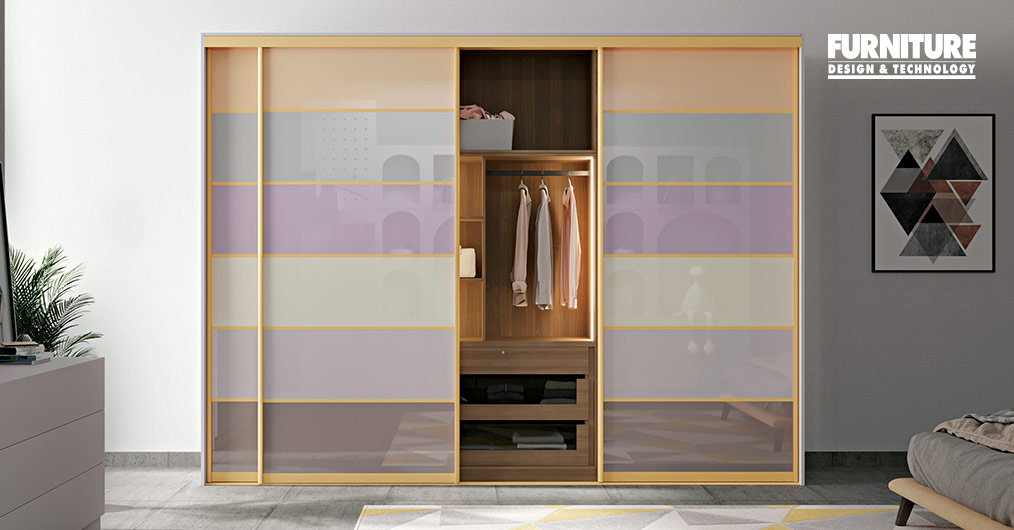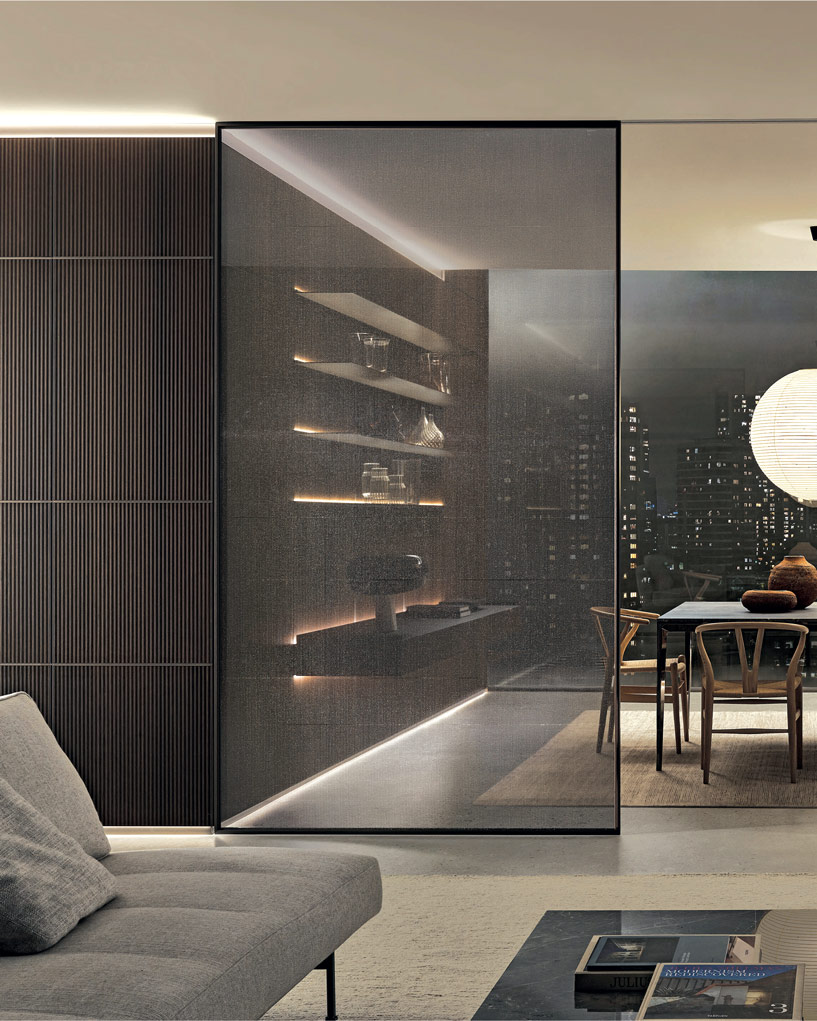
The storage requirement of an average home has soared up to almost 100 per cent, however, with a significant fall in the floor space. With rising innovative sliding solutions easily available in the market for wardrobes, kitchens and partitions, the market is estimated to grow. Not only for its appearance but also on account of its space-saving designs, longevity and ease of use, sliding mechanisms are the in-thing these days.
Sliding systems are a versatile and pivotal element of furniture design. Sliding systems are a popular feature in modern furniture design such as cabinet slides, drawer slides, wall-mounted shelves and sliding doors. Sliding systems allow for smoother movement and improved access to storage space, making them a great addition to any home.
Today, sliding systems in furniture components are a growing product segment in India. Comprising hardware components such as sliders, gliders, casters and rollers that are integrated into furniture pieces, allow them to move more easily across different surfaces or adjust to various heights or angles. The market for furniture sliding systems in India is driven by a number of factors, including the growing demand for modular and multi-functional furniture, the increasing number of small living spaces and the need for easy-to-move furniture, and the rise of the e-commerce industry which has made it easier for consumers to access a wider variety of furniture options. “Convenience, space utilization and aesthetics are three major factors contributing to faster adaptation. Initially high prices were a resistance factor but with time, a wider range for different applications at different prices combined with increased competition benefited,” informs Rajesh Nair, Director-Sales and Marketing, Ebco.
.jpg) Image credit: Blum
Image credit: BlumWith continuous investment flows through hospitality, retail, commercial and healthcare sectors and rising construction activities in India, experts believe that the opportunities for architectural sliding systems and solutions are to gain momentum in the years to come. According to Pratik Harde, Promoter, Sources Unlimited (which brings Rimadesio to India), “Modern and efficient construction systems, better services, support and solutions are available for MEP and infrastructural requirements, thereby facilitating the usage of engineered prefab architectural sliding systems.” For him, the industry (as well as the end-user) is gravitating towards less dependence on labour, hence engaging more professional agents for projects. “The systems themselves are much better engineered, assembled and put together on CNC machines and automated production setups. And finally, of course, the awareness levels of the consumers and end-users are much higher than in the past due to the proliferation of information in various electronic media,” he adds.
With the rising demand for modular solutions in homes and offices, the architectural sliding system is geared to innovate better solutions. In addition, the growing trend towards modular furniture, which can be easily assembled and disassembled, has also contributed to the demand for furniture sliding systems. The increasing availability of a wide range of furniture sliding systems products from various manufacturers, both online and offline, has also contributed to the growing demand. Consumers have more options to choose from, allowing them to find the products that best meet their needs and preferences. There is a growing trend towards minimalistic furniture design, with clean lines, simple shapes, and a focus on functionality. Sliding systems that offer a sleek and unobtrusive look are particularly popular in this trend. In addition, Nair says, “While there is still a preference for heavy-duty, special application and overlay sliding systems, most of the customers prefer inset sliding mechanism to ensure gap-free coverage of the cabinet and sells the most.”
.jpg) Image credit: Blum
Image credit: BlumFurthermore, brands are now launching groundbreaking designs that are equipped with aesthetics and functionality through their robust distribution and showroom network. For instance, Aristo is known to have pioneered floor-to-ceiling wardrobes, thereby changing the landscape of wardrobes in India. “The upwardly mobile and discerning Indian now had access to a product of international standards for their homes at an affordable cost and this opened up an entirely new product category,” informs Kuruvilla Kurian, Director, KBros Aristo Pvt Ltd.
Harde believes that the applications for sliding systems are changing from being a very heavy panel structure in the past to a much lighter system at present. Enlightening us on the progress and current trends, he asserts, “The systems are being designed to do away with the need for a bottom rail, thus presenting the area as being undivided and unified when the partitions are open. From the earlier trend of having sliding wardrobe shutters, the trend for sliding systems is shifting more toward being a room divider, a tool to separate a large space on a temporary or a semi-permanent basis. Living or dining partitions, formal or semiformal demarcations have been observed to be on the rise.”
 Image credit: Sources Unlimited for Rimadesio
Image credit: Sources Unlimited for RimadesioElaborating further, Kurian adds, “In terms of design, customers have been upgrading their sliding systems to premium systems like the Aristo Nova. Niche customers who want a classical aesthetic to their home were able to execute their vision perfectly using Aristo’s Classical sliding systems and Aristo Classical Kitchens.”
Integration is another important trend in furniture sliding systems, with designers and manufacturers looking for ways to seamlessly integrate these systems into the overall design of a space. This includes the use of concealed sliding systems, modular systems, and other designs that create a seamless and cohesive look. “The use of aircraft grade aluminum, water-based coatings, highly efficient and SAP managed production setup are some of the key features of Rimadesio. This production prowess shines through in sliding systems like the Velaria or Maxi, in wall paneling like Modulor, in glass box wardrobes like Cover Freestanding, in doors like the Modus or the Luxor, to name a few,” informs Harde. Additionally, manufacturers are also focusing on customization, offering products that can be tailored to the specific needs and preferences of individual customers.
This article is a part of our exclusive article ‘Hardworking Hardware’ which is originally published in Furniture Design & Technology (FDT Magazine) April 2023 print issue. If you want to read the full article, please subscribe Furniture Design & Technology Magazine here:
Furniture Design India and the magazine FURNITURE DESIGN & TECHNOLOGY (FDT magazine) are from the trusted 22-year-old media house of SURFACES REPORTER and PLY REPORTER.
FDT is a B2B monthly bilingual magazine from India that shares the pulse of the furniture business in India and connects the manufacturers, OEMS, product designers, architects, showrooms, designers and dealers.
Read More© 2025 Furniture Design and Technologies.. All Rights Reserved. Developed by eyeQ Advertising